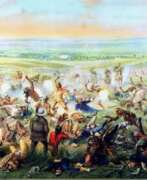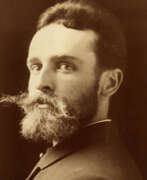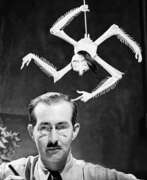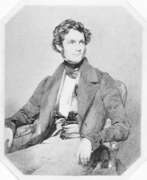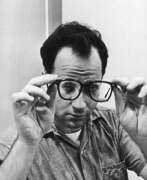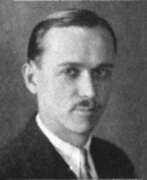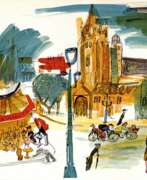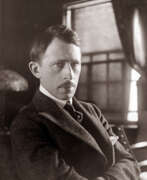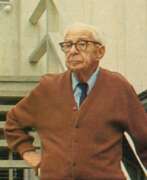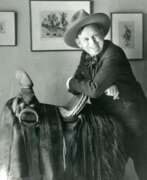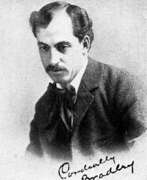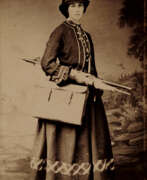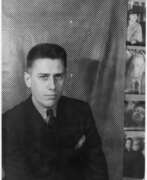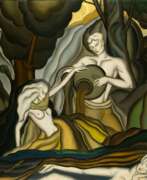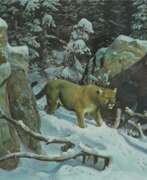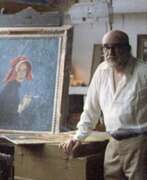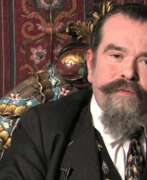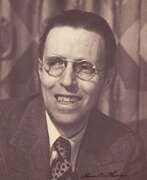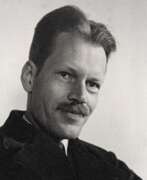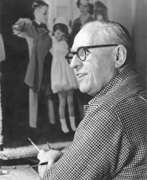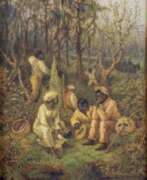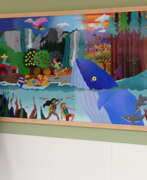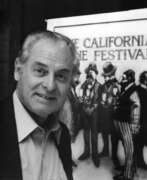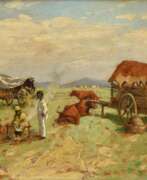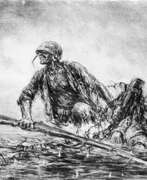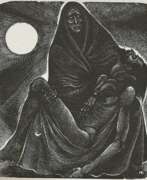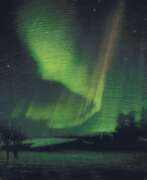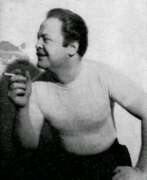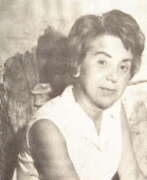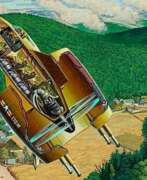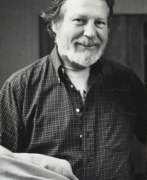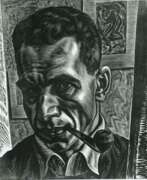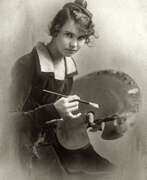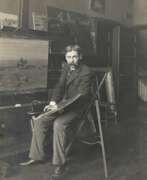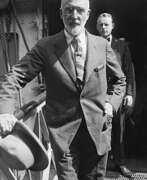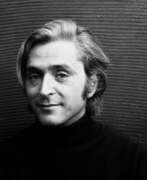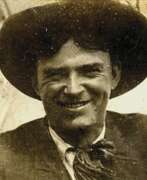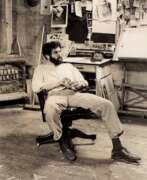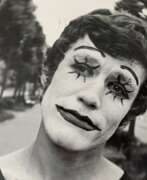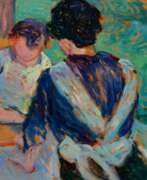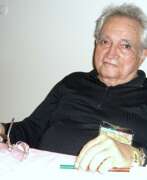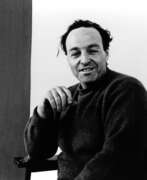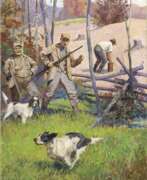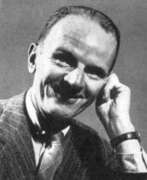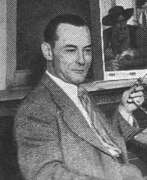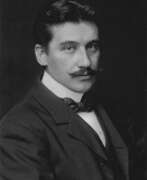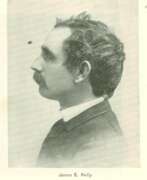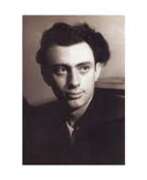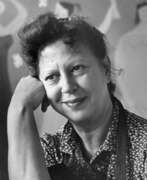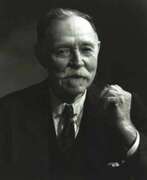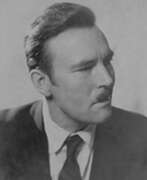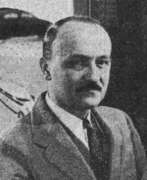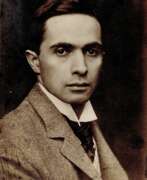Illustrators USA
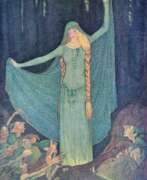

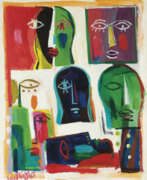

Saleh al-Jumai'e is an Iraqi artist noted for his works that explore the notion of tracks left by ancient heritage. His works often integrate Arabic calligraphy in an abstract artwork. Al-Jumaie and his cohort became the group of artists that defined 1960s Iraqi art. Although al-Jumaie is best remembered as a painter, he also designed posters and produced a number of book covers. His early work features Arabic lettering, but over time the calligraphy became fainter. His interest in exploring new media and materials was maintained throughout his career. The idea of tracks left by tradition is a theme that Jumaie takes up in much of his work. For example, Pages from Old Books is a series of mixed media artworks that creates an illusion of surfaces on which fragments of script have been written.
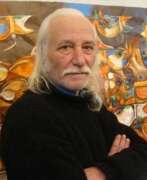



Craig Alan is an American artist whose work displays a technical sophistication as well as a rich imagination.
After moving with his family to New Orleans, Alan worked as a street artist in his youth, creating portraits. Through his exceptional talent and through his own research, he eventually developed an admirable understanding and sense of textures, compositions and colors. Today, Craig Alan represents a wide range of artistic styles, from book illustration to naturalistic oil painting and his Populus Art.
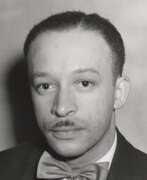

Charles Henry Alston was a mid-twentieth-century American artist. He is known as a graphic and muralist painter as well as a sculptor, illustrator, and educator who lived and worked in New York City's Harlem neighborhood.
Charles Alston was an activist in the so-called "Harlem Renaissance." He became the first African-American director of the U.S. Federal Art Project. The artist created murals for Harlem Hospital as well as a number of cultural and administrative buildings in New York City. Alston is the author of a bust of Martin Luther King, Jr. which was the first depiction of an African American to be displayed at the White House in Washington, DC.
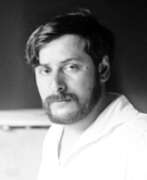

Boris Izraelievich Anisfeld (Russian: Борис Израилевич Анисфельд) was a Russian-American painter, set designer, illustrator, and educator, celebrated for his vivid use of color and imaginative scenery. Born in Bessarabia, Russian Empire, in 1878, Anisfeld's artistic journey led him from the Odessa School of Art to the Imperial Academy of Arts in Saint Petersburg, where he absorbed the influences of prominent artists like Ilya Repin and Igor Grabar. His distinct style caught the attention of Sergei Diaghilev, leading to his work with the Ballet Russe before World War I.
Anisfeld's contributions to art extend beyond his canvas, as his theater designs for Diaghilev's Ballets Russes and collaborations with notable figures like Michel Fokine and Anna Pavlova showcased his ability to blend fantasy with performance. His work with the Ballets Russes, including designing the production of "Sadko" and executing the visions of other celebrated artists for stage sets, marked a significant period in his career before he immigrated to the United States in 1917.
In America, Anisfeld continued his legacy, taking on roles such as a teacher at the Art Institute of Chicago and contributing to the cultural landscape through his stage designs and paintings. His work is recognized for its innovative approach to color and form, bridging the realms of painting and theater design to create immersive, emotionally resonant artworks. Anisfeld passed away in 1973, leaving behind a body of work that continues to inspire and captivate audiences.
For collectors and experts in art and antiques, Anisfeld's work represents a fusion of Russian and American art traditions, enriched by his imaginative approach and vibrant palette. His contributions to the development of modern art and theater design underscore the enduring relevance of his creative vision.
To stay updated on exhibitions, sales, and auctions related to Boris Israelievich Anisfeld, sign up for updates. This subscription will ensure you're informed about new opportunities to explore and acquire works by this influential artist.
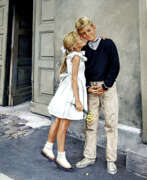

Kurt Ard was a Danish illustrator, painter and printmaker. He became internationally famous for his narrative cover artwork published in popular magazines of the 1950s-1970s, including the Family Journal, the Saturday Evening Post and Reader’s Digest. Ard started his career at various smaller newspapers and worked in the same realistic tradition as his role model, illustrator and painter, Norman Rockwell. During WW II, Kurt struggled to fulfill commission orders. His painting and his reputation and success grew steadily in the post war years. His illustrations soon appeared in major European publications, and he subsequently achieved international fame. Over the course of his career, Ard has sold more than 1000 illustrations to the best magazines in Europe, and to American publications such as McCalls, Good Housekeeping and Redbook. Today, Kurt continues to create exceptional figurative, landscape and seascape paintings with uncompromising authenticity , capturing the charm, beauty and power of these diverse subjects. His work is especially notable for its brilliant light and precise detail.
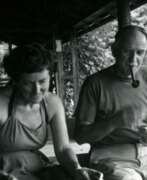

Sally Michel Avery is an American artist known for her paintings in the style of abstract expressionism. Her paintings are often associated with musical rhythm and melody. She began her career as a landscape painter, and in the 1940s she moved to more abstract forms and color schemes.
Avery was one of the few women recognized as influential in American abstract painting in the mid-20th century. Her work can be seen in museums and private collections around the world.
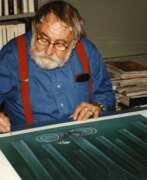

Jan Balet was a German/US-American painter, graphic artist and illustrator. Affected by the style naive art he worked particularly as a graphic artist and as an Illustrator of children's books. Besides this he painted pictures in the style of naive art. Referred to as a "naïve" painter, his works exhibit a dry wit and refreshingly candid, satirical view of life.


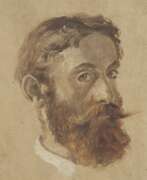

Randolph Caldecott was a British artist and illustrator, born in Chester. The Caldecott Medal was named in his honour. He exercised his art chiefly in book illustrations. His abilities as an artist were promptly and generously recognised by the Royal Academy. Caldecott greatly influenced illustration of children's books during the nineteenth century. Two books illustrated by him, priced at a shilling each, were published every Christmas for eight years.
Caldecott also illustrated novels and accounts of foreign travel, made humorous drawings depicting hunting and fashionable life, drew cartoons and he made sketches of the Houses of Parliament inside and out, and exhibited sculptures and paintings in oil and watercolour in the Royal Academy and galleries.
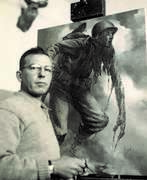

Thomas Calloway Lea III was an American muralist, illustrator, painter, war correspondent, writer and historian. Much of his fiction and literary work has focused on Texas, north-central Mexico, and his World War II experiences in the South Pacific and Asia. Two of his most popular novels, The Brave Bulls and The Wonderful Country, are considered classics of Southwestern American literature.
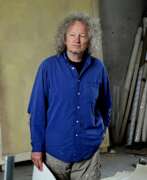

Lawrence W. Carroll was an Australian-born American painter who established a career on both sides of the Atlantic. In his early career Carroll worked as an illustrator for The Progressive, The Village Voice, The New York Times, and other periodicals drawing political illustrations. However it is Carroll's career as a painter that is most significant. His approach to materials, to the scale and structure of the objects is highly distinctive.
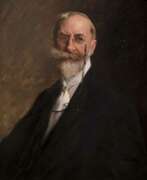

William Merritt Chase was an American painter, celebrated for his role in establishing Impressionism in America and his profound influence as an art educator. Born on November 1, 1849, in Indiana, Chase became a pivotal figure in American art, blending Impressionist and Realist styles with a distinctive flair that captured both cityscapes and intimate studio settings. His mastery of oil, pastel, and watercolor allowed him to create works renowned for their vibrancy and expressiveness.
Chase's career was notably marked by his transformation of studio environments into aesthetic showplaces, making them centers of social gatherings that enhanced his stature in the art community. His tenure at the Shinnecock Hills Summer School and his travels in Europe, especially his interactions with European artists, were crucial in shaping his artistic direction. Notably, his exposure to French Impressionism through exhibitions in New York profoundly influenced his style, integrating lighter palettes and freer brushwork which became evident in his landscapes and portraits.
Chase's works are celebrated for their innovative use of color and composition, qualities that made him a leading figure in American Impressionism. His notable works include scenes of everyday leisure, portraits, and vibrant landscapes, capturing the essence of his era with elegance and sophistication.
If you are intrigued by the artistic journey and impact of William Merritt Chase, consider signing up for updates. This subscription will keep you informed about new sales, upcoming auctions, and events related to his works. Stay connected with the vibrant world of William Merritt Chase and enhance your collection with knowledge and opportunities. Sign up today!
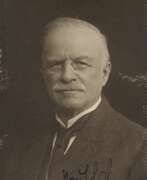

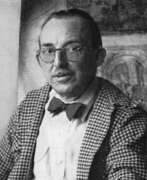

Dean Cornwell was an American illustrator and muralist. His oil paintings were frequently featured in popular magazines and books as literary illustrations, advertisements, and posters promoting the war effort. Throughout the first half of the 20th century he was a dominant presence in American illustration. At the peak of his popularity he was nicknamed the "Dean of Illustrators". He began his professional career as a cartoonist for the Louisville Herald. Soon thereafter he moved to Chicago, where he studied at the Art Institute and worked for the Chicago Tribune. Cornwell's paintings were in Cosmopolitan, Harper's Bazaar, Redbook, and Good Housekeeping magazines. He painted murals for the Los Angeles Public Library, the Lincoln Memorial Shrine in Redlands, California etc. Cornwell taught and lectured at the Art Students League in New York. He served as president of the Society of Illustrators from 1922 to 1926, and was elected to its Hall of Fame in 1959.


William Glen Crooks, an American neorealist painter, has carved a niche for himself with his unique approach to landscape and urban scene painting. Unlike traditional representations, Crooks' works omit human figures, substituting them with vehicles to embody human traits and emotions. His approach to capturing the essence of city and small-town life through this lens has garnered attention for its depth and thoughtfulness. William Glen Crooks' dedication to his craft began at a young age, evolving from drawing comics to a self-taught mastery in representational painting, driven by a passion to defy the norms of modernism that dominated his formative years. His self-imposed rigorous practice of drawing laid the foundation for his distinctive style.
William Glen Crooks' work has been the subject of several exhibitions, including a notable showcase at the Oceanside Museum of Art (OMA). The exhibition, "The Point of View," marked his first museum exhibition and featured twenty-three paintings that spanned over twenty-five years. These works emphasize cityscapes, nostalgic urban scenery, and expansive landscapes, illustrating Crooks' ability to translate everyday scenes into compelling narratives. His paintings are celebrated for their illumination of light and shadow, transforming landscapes into metaphors that reflect his perceptions of the natural world.
His technique and subject matter draw inspiration from a blend of influences, including the landscape painters of the 1800s, Edward Hopper's narrative style, Mark Rothko's color fields, Wolf Kahn's liberating techniques, and John Frederick Kensett's luminism. This eclectic mix has allowed William Glen Crooks to explore the opacity of light and transparency of shadow in a way that brings a fresh perspective to the landscape genre, making his work resonate with a contemporary audience while retaining a timeless quality.
For collectors and experts in art and antiques, William Glen Crooks offers a unique investment in the realm of contemporary realism. His paintings invite viewers to explore the subtle interplay of light, shadow, and form, capturing the quiet moments of daily life with a profound depth and sensitivity.
To stay updated on William Glen Crooks' latest works and exhibitions, signing up for newsletters from galleries and museums that feature his work, such as the Oceanside Museum of Art, is recommended. This subscription will ensure that enthusiasts are always informed about new sales, auction events, and showcases related to Crooks' evolving portfolio.
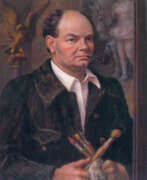

John Steuart Curry was an American artist, celebrated for his role in the Regionalist art movement. Born in Dunavant, Kansas, Curry captured the raw and tumultuous aspects of rural American life through his paintings. His works often depicted dramatic scenes of Kansas, including tornadoes, prairie fires, and other challenging aspects of rural existence, reflecting both his admiration and critique of the land.
Curry's significant contribution to American art is evident in his murals, particularly "Tragic Prelude," housed in the Kansas State Capitol. This mural portrays John Brown amidst the violent conflicts of the Civil War, encapsulating the tensions within American identity and history. Despite its controversy, especially concerning its portrayal of Brown and Kansas, this work remains pivotal in understanding the nation's past.
He studied at prestigious institutions such as the Art Institute of Chicago and later moved between New York, Paris, and Connecticut, contributing to his eclectic style. Curry’s journey as an artist was marked by a transition from commercial illustration to a focus on creating paintings that resonate with everyday Americans, which he believed should be the essence of art.
For those interested in the works and life of John Steuart Curry, including updates on exhibitions and sales of his artwork, you can sign up for our newsletter. This subscription will ensure you are informed about new product sales and auction events specifically related to Curry's works.
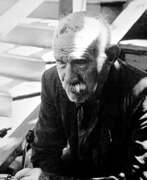

Henry Joseph Darger was an American writer, novelist and artist who worked as a hospital custodian in Chicago, Illinois. He has become famous for his posthumously discovered 15.145-page fantasy novel manuscript called The Story of the Vivian Girls, in What Is Known as the Realms of the Unreal, of the Glandeco-Angelinian War Storm, Caused by the Child Slave Rebellion, along with several hundred drawings and watercolor illustrations for the story.
The visual subject matter of his work ranges from idyllic scenes in Edwardian interiors and tranquil flowered landscapes populated by children and fantastic creatures, to scenes of horrific terror and carnage depicting young children being tortured and massacred. Much of his artwork is mixed media with collage elements. Darger's artwork has become one of the most celebrated examples of outsider art.
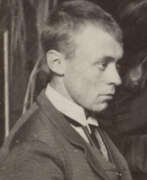

Pieter Cornelis de Moor, a Dutch artist, stands out as a versatile and innovative figure in the art world. His education at the Academy of Visual Arts in Rotterdam and the Drawing Academy in Antwerp laid the foundation for a career marked by diversity and creativity. De Moor's achievements, including a silver medal in the Prix de Rome in 1887, underline his early recognition and the promise of his artistic journey.
De Moor's artistry was not confined to a single medium; he was adept in drawing, etching, painting, watercolor, producing lithographs, and working as an illustrator. His artworks, ranging from "Dancing Women" to "Poultry on a Yard" and "An Elegant Lady Feeding Peacocks," showcase his broad thematic interests and technical skills. Notably, his works are held in prestigious collections, including the Rijksmuseum and the Dordrechts Museum.
The artist's life was rich with experiences, having worked across Europe and eventually settling in the United States. His legacy, punctuated by exhibitions in museums such as Museum Boijmans Van Beuningen and the Drents Museum, continues to captivate art enthusiasts and collectors.
For collectors and art experts, delving into the works of Pieter Cornelis de Moor offers a unique glimpse into the evolution of Dutch art. His contributions, particularly in the realm of Symbolism, highlight an era of artistic exploration and innovation.
Stay informed about new product sales and auction events related to Pieter Cornelis de Moor by signing up for updates. This subscription is your gateway to the latest acquisitions and opportunities in the world of this distinguished artist.
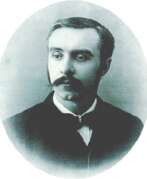

Sherman Foote Denton was an American naturalist, inventor, illustrator, and writer.
Denton was one of the best later natural history artists. He served as an artist for the Smithsonian Institution's U.S. Fish Commission and was commissioned by the Smithsonian Institution to create the book Game Fish of New York. And the annual reports of the Fish and Game of New York State for 1895-1909 featured 99 species of freshwater and marine fish, as well as a number of other items, including lobsters, oysters, ring-necked pheasant, and Virginian deer. These have been published in both book and folio form. Denton also developed a method of mounting fish that preserved their lifetime color.
Along with his brothers Shelley Wright and Robert Winsford, Denton founded the Denton Brothers Butterflies Company, which sold butterfly specimens. Sherman invented and patented in 1901 the mounting of scale specimens on a white plaster tablet under glass instead of the traditional mounting.


Maynard Dixon was an American painter and illustrator. Dixon became known for his Western landscapes, Native American images, scenes of cowboys and shepherds, and his work during the Great Depression.
Dixon studied in San Francisco and New York, where he worked in magazine illustration. He also traveled throughout Europe, where he found inspiration in the work of Renaissance artists and the Impressionists. Upon his return to the United States, however, he began to pursue the genre of Western painting, which became his main passion. One of Dixon's most famous series of works is The Myth of the West, in which he depicted the Western landscape and cowboys using bright colors and geometric shapes. His work was popular in the 1920s and 1930s, and he was often invited to exhibit his work in museums and galleries.
In addition, Dixon also worked as an artist-designer for film studios, creating sets and costumes for Westerners. His work has been used in such famous films as Mutiny on the Bounty, The Sheriff, and Mighty Joe Yankee. Maynard Dixon's work is in the collections of many museums, including the National Museum of Western Painting in Oklahoma City and the Fenimore Cooper Museum in New York City.
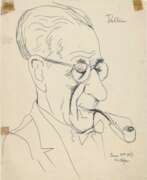

Benedikt Fred Dolbin, born Pollak, an Austrian press illustrator, studied at the Vienna University of Technology and worked for the construction company Waagner, Biro & Kurz during the First World War. He later moved to Berlin, where he worked as a press illustrator and book illustrator. Because of his Jewish origins, he was excluded from the Reich Press Chamber in 1933 and was banned from working in 1935. After emigrating to the USA, Dolbin continued his career His career as a draftsman continued, but he was unable to build on his earlier successes.


Aaron Douglas is an African-American American artist of the so-called "Jazz Age". One of the leading figures of the Harlem Renaissance.
Aaron Douglas engaged in monumental and social painting, fought against racial inequality in the USA with his art, is also known as illustrator, decorator and teacher, who taught painting at US universities. In 1944 he finished his career as an artist by founding the painting department at the University of Nashville, Tennessee, where he taught until 1966. He was a major influence on African American fine art in the first half of the twentieth century. He worked in the Art Deco and Modernist styles.


Asher Brown Durand was a pivotal figure in American art, particularly renowned for his role in the Hudson River School, a group of artists known for their romantic portrayal of the American landscape. Born in Jefferson Village, New Jersey, in 1796, Durand initially carved out a successful career as an engraver before transitioning to landscape painting, influenced by Thomas Cole and other contemporaries.
Asher Brown Durand's artistic philosophy emphasized the importance of nature as a direct inspiration for art, a viewpoint he eloquently expressed in his "Letters on Landscape Painting." His works often reflect a deep reverence for the natural world, intertwining artistic vision with the divine aspects of the American wilderness. "Kindred Spirits" (1849), one of his most celebrated works, exemplifies this approach, depicting Thomas Cole and poet William Cullen Bryant in a sublime natural setting.
Throughout his career, Asher Brown Durand's contributions to the American art scene were significant, not just through his paintings but also through his role as a mentor and his involvement in the National Academy of Design. His works continue to be celebrated for their detailed representation of nature and their influence on the course of American landscape painting.
Asher Brown Durand's legacy is preserved in various prestigious collections, including the Metropolitan Museum of Art and the Smithsonian American Art Museum, where his works continue to inspire appreciation for the intrinsic beauty of the American landscape and its artistic rendition.
For art collectors and enthusiasts looking to delve deeper into the rich tapestry of American art history, staying informed about Asher Brown Durand's works and their significance is invaluable. Consider subscribing to updates on exhibitions and sales featuring Durand's works to enhance your collection and deepen your understanding of this pivotal artist's contributions to the art world.


Gil Elvgren, an American artist born in 1914, is celebrated for his contributions to pin-up art, advertising, and illustration. Known for his vibrant and playful depictions of the "girl next door," Gil Elvgren's work resonates with charm and a sense of innocent allure. His artistry shines through in over 500 paintings, primarily in oil on canvas, showcasing beautiful women in various everyday and glamorous settings.
Starting his career at Stevens and Gross in Chicago, Gil Elvgren was mentored by Haddon Sundblom and began his journey in pin-up art with Louis F. Dow before his significant association with Brown & Bigelow from 1945 to 1972. This period marked a blossoming in his style, incorporating more expression, movement, and a unique blend of humor and glamour. His paintings not only adorned calendars but also found their way as nose art on military aircraft during World War II.
Gil Elvgren's influence extended beyond pin-ups; he was a sought-after commercial illustrator, working with major corporations like Coca-Cola and General Electric, and his art graced the pages of prominent magazines. His pieces, especially from his Brown & Bigelow days, are highly prized by collectors, with some fetching over $200,000 at auctions.
For art collectors and experts, Gil Elvgren's legacy in the realm of American art and culture remains unparalleled. His ability to capture the essence of American femininity and charm continues to be celebrated and studied, making his works valuable assets in the world of art and antiques.
For those interested in staying updated on new product sales and auction events related to Gil Elvgren, consider signing up for updates. This subscription will ensure you're informed about the latest opportunities to acquire pieces connected to this iconic artist's legacy.
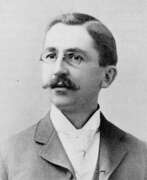

Abbott Fuller Graves was an American painter and illustrator who specialized in decorative open air garden paintings and floral still lifes. His use of thick brushstrokes, bright colors, and natural light shows the influence of European impressionism.
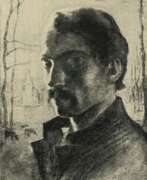

Robert Lvovich Genin (Russian: Роберт Львович Генин) was a Jewish-born artist of the first half of the twentieth century who worked in several countries, including the Russian Empire, Germany, France, Germany, Switzerland, and the USSR. He is known as a painter and graphic artist.
Robert Genin worked in a variety of genres including landscapes, portraits, genre compositions and nudes. He also did lithography, woodcuts and etching. His style evolved from Jugendstil and Symbolism in the early 1900s to Expressionism after the First World War. He later came to a kind of lyrical primitivism. The artist worked in both easel and monumental painting and was influenced by various artists.


Charles Dana Gibson, an American artist, was a pivotal figure in the illustration world, best known for creating the iconic "Gibson Girl," which symbolized the ideal American woman of the early 20th century. His work, which often satirized society's mores and public life, played a significant role in defining American feminine style during the 1890s through the early 1900s.
Charles Dana Gibson's early fascination with art was nurtured by his family, leading him to study at the Art Students League in New York. He began his illustrious career with pen and ink illustrations, contributing to prominent magazines like Life and Harper's. His transition from illustration to painting marked a significant turn in his career, although he remained best known for his illustrations.
The "Gibson Girl" became a cultural icon, featured in various media and even influencing domestic object designs. Gibson's influence extended beyond art; he was actively involved in World War I propaganda efforts and later took over as the owner and editor of Life magazine. Even after his retirement, Gibson's legacy continued through his impact on American art and culture.
For art collectors and enthusiasts, Charles Dana Gibson's works offer a glimpse into a transformative era in American art, capturing the elegance, humor, and societal observations of his time. His contributions to illustration and painting remain a testament to his talent and vision.
If you're keen on staying informed about sales and auction events related to Charles Dana Gibson's works, consider signing up for updates. This subscription will provide you with the latest information on acquiring pieces linked to this influential artist.


Grigory Efimovich Glukman (Glikman) was a Russian-American graphic artist.
In the 1930s Grigory Glukman was mainly engaged in easel painting. At that time, his main subjects were scenes from Parisian street life, landscapes, portraits, and nudes. In 1941 he emigrated to the USA.
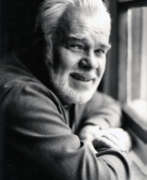

Vitaly Nikolaevich Goryaev (Russian: Виталий Николаевич Горяев) was a celebrated Soviet graphic artist, illustrator, painter, and caricaturist, born on April 14, 1910, in Tobolsk province, and passed away on April 12, 1982, in Moscow. He embarked on his artistic journey after his family moved to Chita in 1921, where he first published his drawings in the local newspaper. Goryaev's notable achievements include first-degree diplomas at the All-Union Contests "Best Books" for his illustrations to "The Adventures of Huckleberry Finn" and Gogol's "Petersburg Stories". His work was also internationally recognized, evidenced by a diploma II degree at the International Book Exhibition in Bratislava in 1967 for "Petersburg Stories", and in 1969, he was awarded the Gold Medal of the Czechoslovak Union of International Relations. Goryaev's illustrations spanned works by Russian classics like Pushkin, Gogol, and Dostoevsky, contributing significantly to the visual representation of these literary giants' works.
A laureate of the State Prize of the USSR (1967) for his contributions to illustrating Gogol's "Petersburg Stories", Goryaev was honored with the title of People's Artist of the RSFSR in 1976, and later, People's Artist of the USSR in 1981, marking his significant contributions to Soviet art. His legacy includes a profound impact on the illustration of literature, with his works being housed in prestigious collections such as the State Tretyakov Gallery, the Russian Museum, and the Pushkin Museum of Alexander Pushkin.
Goryaev's style was known for its expressive detail and ability to capture the essence of the literary works he illustrated, making his art an integral part of Soviet visual culture. His son, Sergei Vitalevich Goryaev, continues the artistic lineage as an artist, preserving the family's contribution to Russian art.
For collectors and experts in art and antiques, Goryaev's works represent a unique intersection of Soviet history, literature, and visual arts, offering a glimpse into the rich cultural tapestry of the era. His illustrations are not only important for their artistic value but also for their historical significance, embodying the spirit and challenges of Soviet society.
To stay updated on events, sales, and auctions related to Vitaly Nikolaevich Goryaev's work, sign up for updates. This subscription ensures you remain informed about opportunities to acquire pieces of this influential artist's legacy, highlighting moments when his works become available in the market.


John August Groth was an American illustrator and teacher. He gained recognition as a war correspondent-illustrator, where he incorporated a technique he called the "speed line." He was the first art director of Esquire Magazine and taught at the Art Students League, the Pratt Institute, and the Parsons School of Design. In 1940, he was featured in an exhibition at MOMA, titled, "PM Competition: The Artist as Reporter." He covered six different wars and was one of the first correspondents in Paris after its liberation. Groth illustrated such classic books as: A Christmas Carol, All Quiet on the Western Front, The Grapes of Wrath, The War Prayer, and Gone with the Wind. His work is in collection at the Metropolitan Museum of Art and the Art Institute of Chicago.
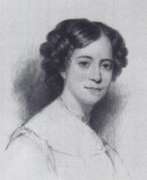

Sophia Amelia Hawthorne, née Peabody was an American artist and illustrator and writer.
Sophia Peabody is the wife of writer Nathaniel Hawthorne. Before her marriage, she was already an accomplished artist; during her life she also published articles, her diaries, and some of Nathaniel's notebooks, which she edited and published after his death.
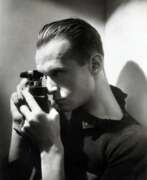

Baron George Hoyningen-Huene was a fashion photographer of the 1920s and 1930s. He was born in the Russian Empire to Baltic German and American parents and spent his working life in France, England and the United States.
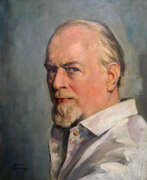

Serge Ivanoff was a French portrait painter of Russian origin. He created book illustrations, posters and advertisements.
Serge Ivanoff executed portraits of many famous personalities, including Pope Pius XI, Serge Lifar, Yvette Chauvire, Arthur Honegger, Edwige Feuer, Grand Duke Vladimir Kirillovich Romanov, Alexandre Benois, Olga Boznanskaya, Zinaida Serebryakova, Vyacheslav Ivanov, Paul Valéry, Jacques Fath, Eleanor Roosevelt, and Jefferson Caffrey.
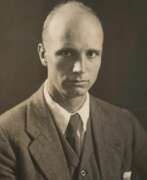

Rockwell Kent is an American artist, illustrator, and writer. He was born and raised in New York City and began his art career in the early 1920s.
Kent worked in a variety of genres and styles, including realism, expressionism, and cubism. Kent became known for his book illustrations as well as his paintings and prints. His work was frequently published in Harper's Weekly, The New York Times, and Vanity Fair magazines and newspapers.
He also illustrated many books, including famous works by Ernest Hemingway and Herman Melville. Kent was also an activist and political activist. He was an advocate of socialist ideals and participated in political movements. In addition, he was a traveler and explorer, having made several trips to Alaska and other far northern territories.
Kent was also a writer and author of several books, including the autobiographical novel It's Me, O Lord! and a book about his travels. Kent's style was recognizable and original, and he was known for his powerful compositions, bright colors, and pronounced contours. His work remained popular even after his death in 1971, and many can be seen in museums and art galleries around the world.
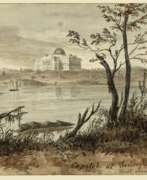

August Köllner (German: Augustus Koellner or Köllner), full name Augustus Theorore Frederick Adam Kollner, was a German and American painter and illustrator, engraver, and publisher.
August Köllner studied painting and lithography in Frankfurt, moved from Germany to the United States, and settled in Philadelphia in 1839. He soon took a job with Huddy and Duvall's U.S. Military Journal. In the 1840s he worked on a series of watercolors, fifty-four of which were published in 1848-51 by the Paris firm of Goupil, Vibert & Co. under the title Views of American Cities.
August Köllner worked on book illustrations, designed various merchandise, and worked for other lithographic firms in Philadelphia until he went into business for himself as a printer and lithographer. He exhibited his drawings at the Pennsylvania Academy of the Fine Arts in Philadelphia in 1865 and 1868.
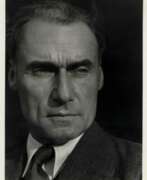

Walter Francis Kuhn is an American artist who occupies a place in American art history as an accomplished caricaturist, draftsman, engraver, sculptor, and painter. His cycle of portraits of circus and vaudeville performers is world famous. He was also the organizer of the famous 1913 Armory Exhibition, which was America's first large-scale introduction to European modernism.
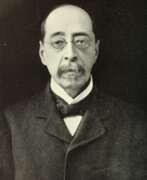

John La Farge was an American artist whose career spanned illustration, murals, interior design, painting, and popular books on his Asian travels and other art-related topics.
La Farge is best known for his production of stained glass, mainly for churches on the American east coast, beginning with a large commission for Henry Hobson Richardson's Trinity Church in Boston in 1878, and continuing for thirty years. La Farge designed stained glass as an artist, as a specialist in color, and as a technical innovator, holding a patent granted in 1880 for superimposing panes of glass. That patent would be key in his dispute with contemporary and rival Louis Comfort Tiffany.
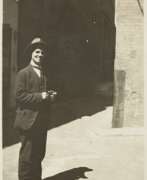

Percy Alexander Leason was an Australian political cartoonist and artist who was a major figure in the Australian tonalist movement. As a painter and commercial artist his works span two continents.


